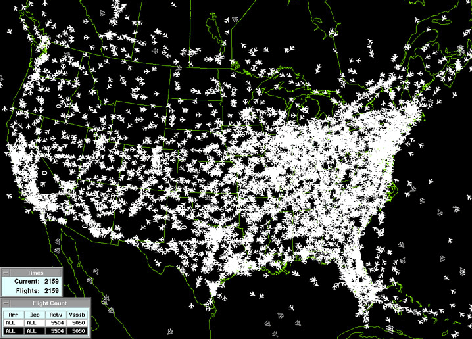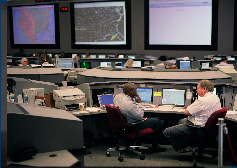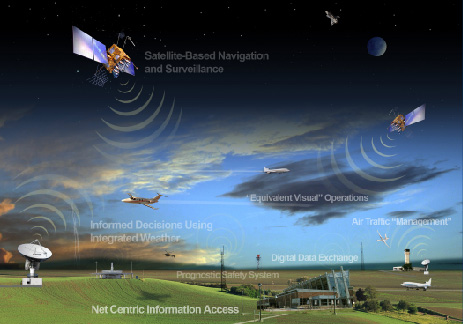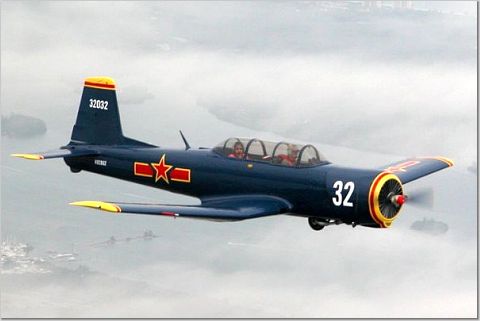Keeping America's Skies Safe

There are around 7,000 aircraft in the air over the United States at any given time.
The United States' air traffic control system is the safest in the world.
To keep it that way, FAA and its Air Traffic Organization work continuously to improve the system. This includes incorporating new equipment and facilities as well as determining where that equipment and those facilities will be most effective.
The FAA is working on a plan now to make the best use of new and existing technology, infrastructure, and employees to handle the doubling and tripling of air traffic expected in the coming decades. The Next Generation Air Transportation System, or NextGen, will transform the national airspace system from one that is based on ground radars to one that uses satellite technology.
Today's Air Traffic Control
 Command Center staff manage the flow of air traffic when weather, equipment, runway closures, or other conditions are expected to place stress on the NAS.
Command Center staff manage the flow of air traffic when weather, equipment, runway closures, or other conditions are expected to place stress on the NAS.
Most air traffic controllers today do their jobs without ever seeing the aircraft they guide. They monitor radar screens to track aircraft. As aircraft fly over radar sites, the data from those radars is communicated digitally via telecommunications lines to controllers hundreds or even thousands of miles away.
Controllers in en route facilities guide airplanes flying at high altitudes through large sections of airspace. As aircraft fly across the country, pilots talk to controllers in successive en route centers. There are 21 en route centers that control aircraft flying through Unites States airspace.
At approach control facilities, controllers guide aircraft as they approach, or leave, airspace surrounding airports to about 40 miles away.
Controllers at most of these facilities handle approach control for many different airports in one facility. For example, Potomac TRACON handles air traffic going into and out of all the airports around Washington D.C., Baltimore, MD, and Richmond, VA. All of the controllers in this facility are experts at one section of the airspace the facility controls, but they work closely together to ensure a smooth transition of all aircraft though the entire region.
At the Air Traffic Control System Command Center, controllers plan air traffic for the entire country, taking into consideration how weather and other events, such as military maneuvers, will affect air traffic patterns. Command Center controllers talk to controllers in other facilities and to airline traffic managers to come up with "master plans."
The public is most familiar with air traffic control towers at airports. Controllers in these facilities guide aircraft as they take off or land and taxi from or to the gate. Their primary function is to separate aircraft on the airport surface. But many airports in the United States don't have towers so controllers at remote approach control facilities guide aircraft into and out of those airports.
The Future of Air Traffic Control

NextGen will have the technology and infrastructure necessary to handle the increasing air traffic expected in the coming decades. Satellite-based navigation will allow aircraft to fly more direct routes and navigate around inclement weather which will increase airspace capacity and reduce delays.
As FAA moves through the transition of air traffic control from radar-based to satellite-based, controllers and pilots will have the advantage of increasingly sophisticated technology. While radars require aircraft to fly over their physical locations on the ground, satellite-technology will allow controllers to guide aircraft in more direct routes through the nation's airspace. Essentially, every controller in the United States will be able to see the exact position of every aircraft flying in our airspace, no matter where in the country they work.




